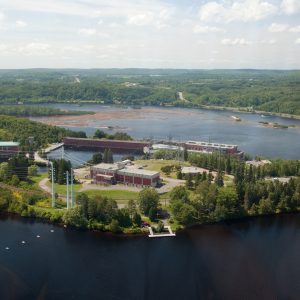The Stream, June 29: Pollutants, Agriculture, And Expanding Populations Stress Water Reserves
The Global Rundown
Pollutants continue to taint vital groundwater supplies in the United States and India, even as informed government agencies fail to act. Swedish scientists say they are one step closer to cracking cost-effective hydrogen energy. Water ATMs may prove an innovative solution to Kenya’s water crisis. Meanwhile, reimagining agricultural practices in Asia and the Caribbean could hold the key to surviving unprecedented droughts. However in Karachi, Pakistan’s largest city and the sixth most water-stressed in the world, solutions will need to come even faster, as a rapidly expanding population causes dire water shortages.
“There’s nothing here. We don’t even have enough water to wash up for prayer, do our laundry or wash our dishes.”– Farzana Khatoun, one of Karachi’s 20 million residents. With a 4.5 percent growth rate, the city continues to expand by nearly a million new residents each year. Experts predict that by 2025 the country will have depleted its available water supply. (The Guardian)
By The Numbers
17.6 million Number of Americans who receive drinking water from the more than 5,300 United States water systems currently in violation of the Environmental Protection Agency’s lead and copper rule. The Natural Resources Defense Council, an environmental advocacy organization, alleges that the EPA, while aware of many of these violations, is failing to take action. CNN
130 million Number of Indians living in areas where groundwater supplies are contaminated with at least one dangerous pollutant, including arsenic and nitrate. With expensive water purifiers out of reach for many affected citizens, even the much awaited monsoon rains may not quench their thirst. Phys.org
1,200 Number of “ATM water dispensers” slated to pop up around Nairobi as part of a $300,000 plan to edge out small-scale, exploitative water dealers. These pay-for-water stations are also expected to curtail cholera and other waterborne diseases. The Star
Science, Studies, And Reports
Swedish scientists at the KTH Royal Institute of Technology in Stockholm report they have come one step closer to cost-effectively creating hydrogen energy from water, a long sought renewable alternative to traditional fuels. Those involved are optimistic that their new electrocatalytic water splitting technique, which employs abundant, non-precious materials, could eventually lead to a hydrogen-fuel economy. Phys.org
On The Radar
Everything from divining rods to dams to crop diversification is being used to stave off the effects of drought in Southeast Asia’s Mekong region. Experts are struggling to balance effective but often invasive tactics across a continent that uses up to 80 percent of its water for agriculture. Some low-impact solutions include fish farming and involving more female farmers. Newsweek
Alterations to Cuba’s irrigation strategy could help alleviate the worst drought the island nation has seen in 115 years. If more methodical agricultural methods are successful, they could serve as a model throughout the Caribbean region, which includes seven of the world’s top 36 water-stressed countries. Inter Press Service
Circle of Blue contributor
Nick is interested in the social and political instability caused by growing global resource scarcity. He is also the director of communication at On the Ground, an international aid and development NGO that supports sustainable community development in farming regions.




